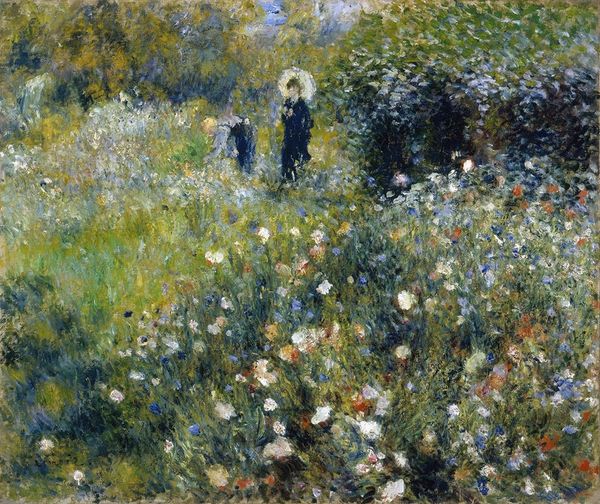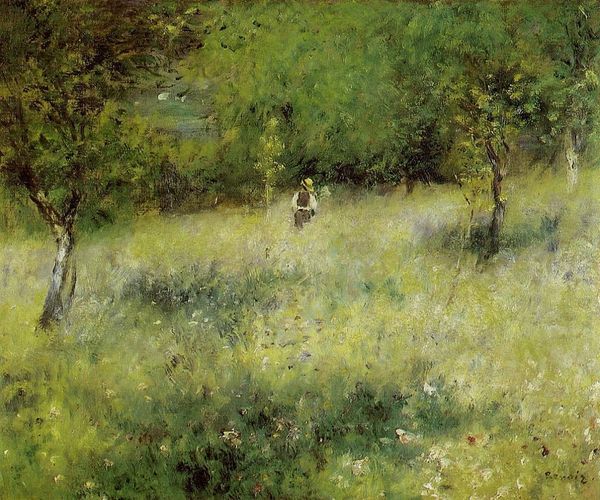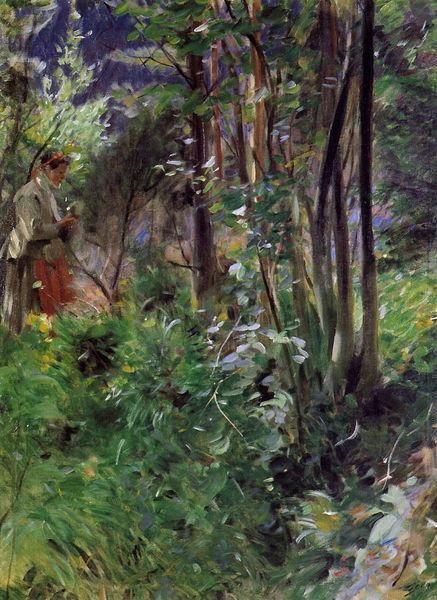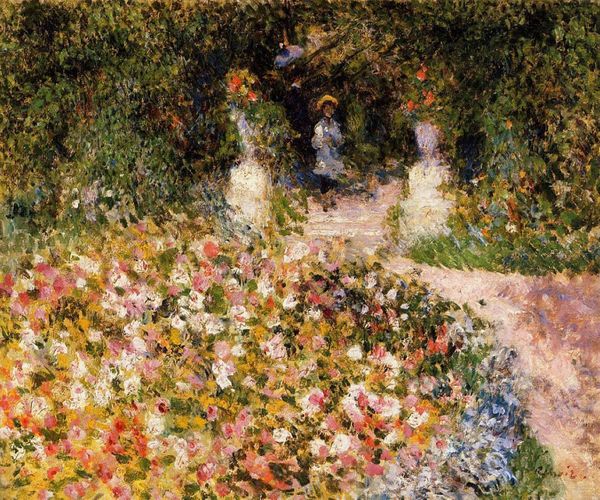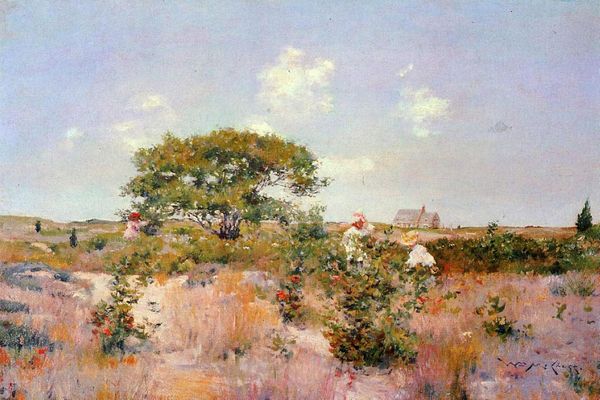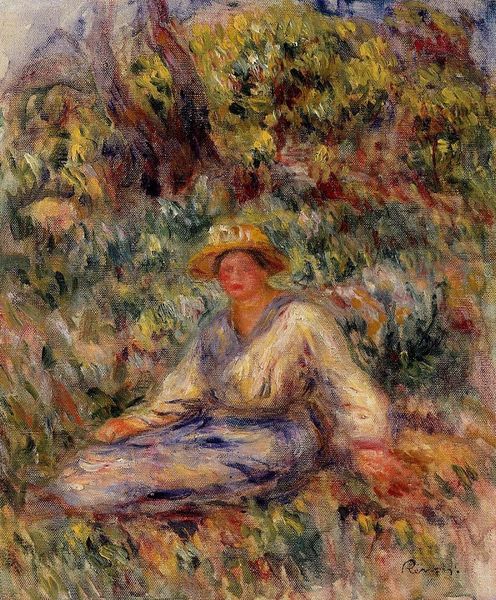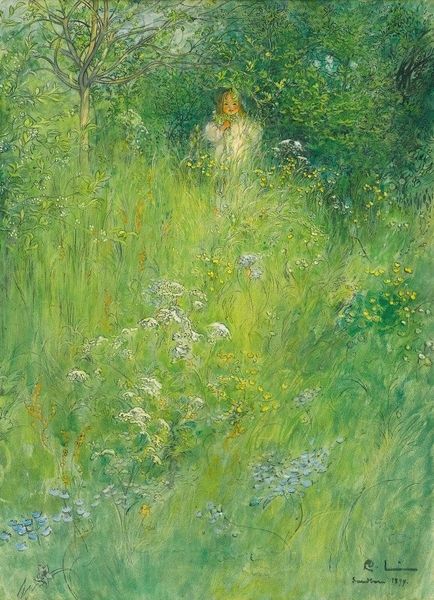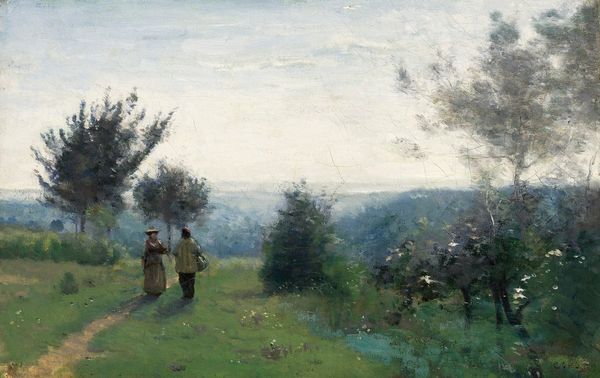
Copyright: Public domain
Curator: What a delightful flurry of colors. It's almost overwhelming in its vibrancy. Editor: Indeed. We're looking at "Conversation in a Rose Garden," rendered in 1876 by Pierre-Auguste Renoir. A superb example of his impressionistic plein-air work. Curator: Plein-air indeed. The surface seems alive with the marks of the brush. It’s all about capturing the fleeting qualities of light. Oil paint applied so directly, conjuring a sense of movement and impermanence, just like the ephemeral beauty of the roses. It practically hums. Editor: Absolutely. And think about the social context! Impressionism, capturing bourgeois leisure at a time of rapid industrial change. Rose gardens, themselves, meticulously cultivated spaces, markers of privilege. Renoir, displaying these settings, offered glimpses into specific worlds, shaping cultural ideals about leisure. Curator: But isn't it also a focus on the labor behind creating such leisure? The gardeners toiling away to shape this natural artifice for the pleasure of these figures… It highlights how deeply involved the elite are in production – just distanced. Editor: That’s interesting. The figures appear quite detached. This raises questions regarding who are these figures depicted? Are they socialites or paid laborers? Renoir often blurred the line. This very ambiguity challenged art conventions of the period by portraying the nuances within social classes. Curator: Consider the materiality too—the weave of the canvas, the build-up of paint itself, demanding that we consider not only *what* is depicted, but the sheer *making* of this thing. The physicality is what roots it to the real world. Editor: Very true, by depicting the social rituals within meticulously curated settings, Renoir wasn't just painting pretty scenes, he engaged in the politics of representation. Curator: This exploration reinforces the complexities beneath Impressionism. What was considered the 'good life,' the materials consumed in it. It really makes you ponder how art acts like a mirror reflecting, and shaping societal values. Editor: I agree, it's more than just brushstrokes and roses; it’s about revealing the cultural and political atmosphere. A painted portal into understanding a society, in a past era.
Comments
No comments
Be the first to comment and join the conversation on the ultimate creative platform.
